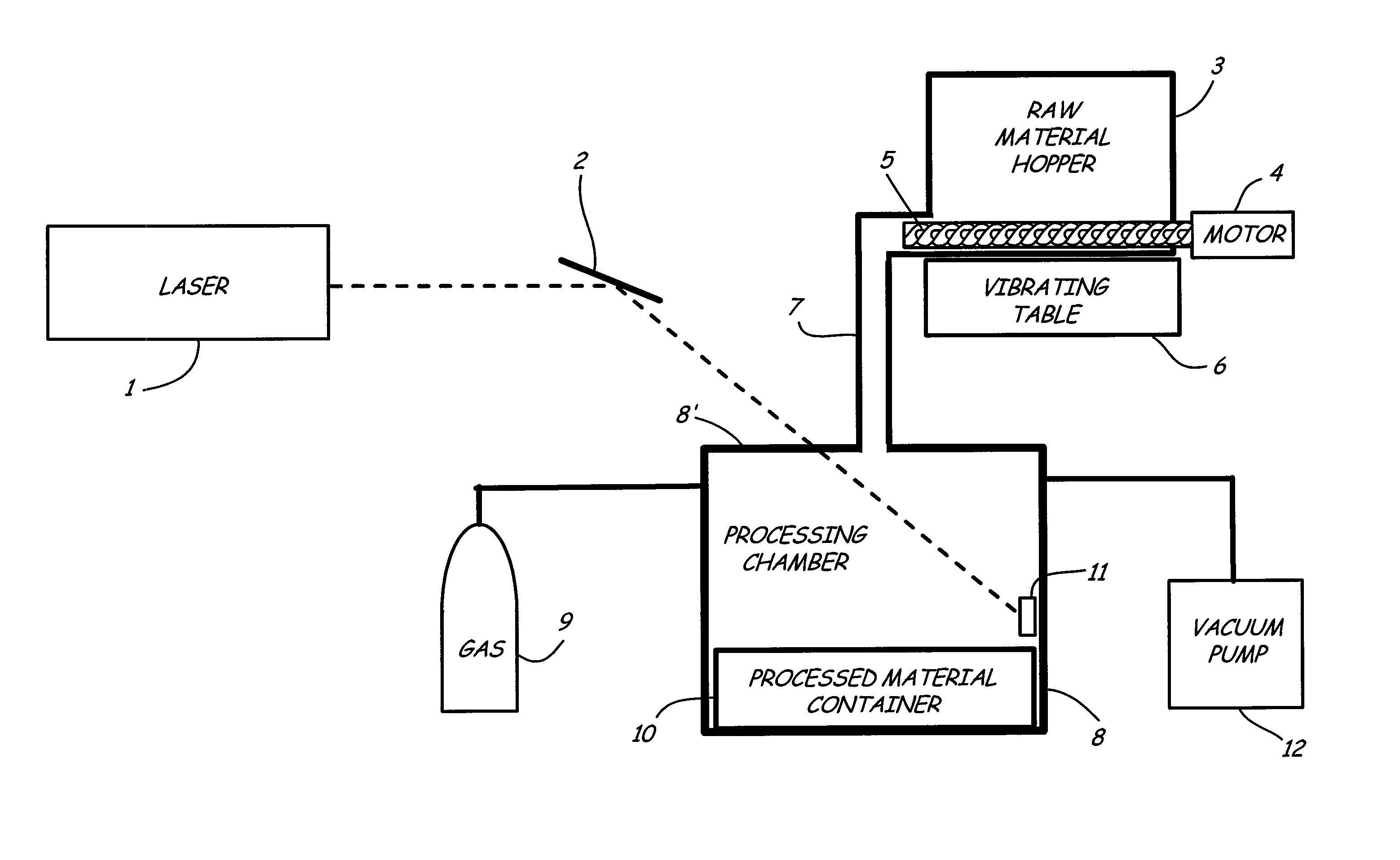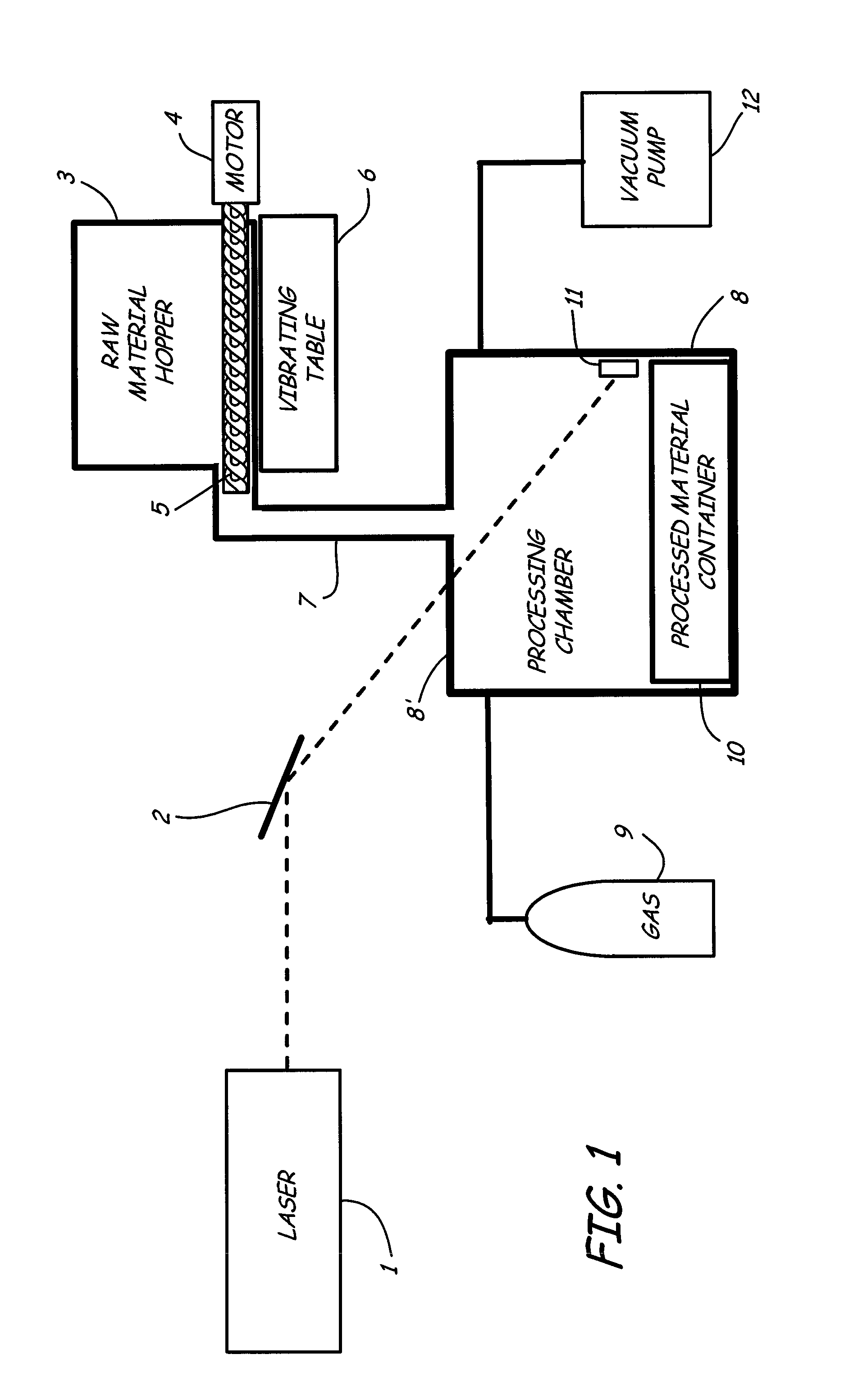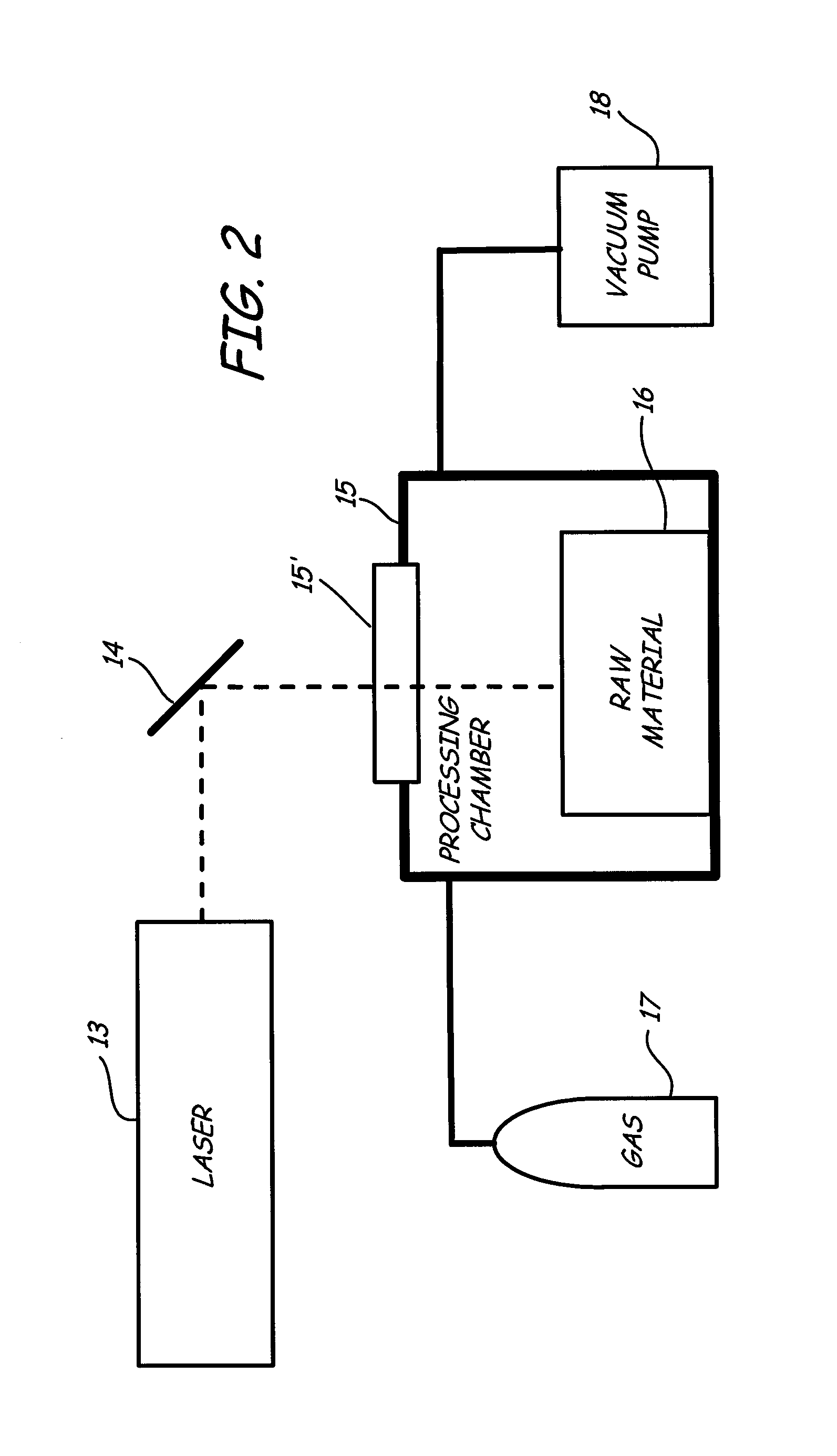Process to create simulated lunar agglutinate particles
a technology of agglutinate particles and lunar soil, which is applied in the direction of engines, mechanical equipment, machines/engines, etc., can solve the problems of not having accurately simulated particles and soil simulants, and achieve the effect of affecting the mechanical behavior and other thermo-physical properties of lunar soil, and high shear strength
- Summary
- Abstract
- Description
- Claims
- Application Information
AI Technical Summary
Benefits of technology
Problems solved by technology
Method used
Image
Examples
example 1
[0020]In this example, the major components of the processing hardware used to create simulated agglutinate particles are shown in FIG. 2, including a CO2 laser 13, motorized laser mirror 14, processing chamber 15, material container 16, hydrogen gas supply 17 and vacuum pump 18. The raw material is placed inside the processing chamber 15 in the material container 16. The processing chamber 15 is closed and evacuated with the vacuum pump 18. The processing chamber 15 is then filled with hydrogen gas from the hydrogen gas supply 7. Alternatively, the processing chamber 15 can be purged with hydrogen gas if the vacuum pump is not used. If the production of iron globules is not desired, this process can be performed in any other gas at any pressure, or under vacuum conditions. The raw material is exposed to a pulse of CO2 laser energy. The laser energy emitted from the CO2 laser 13 reflects off of the motorized laser mirror 14 down into the processing chamber 15 through a window 15′ th...
example 2
[0021]In this example, the same basic configuration shown in FIG. 2 is used. However, the motorized laser mirror 14 is replaced with a stationary laser mirror or the laser energy is directly admitted into the processing chamber 15. The material container 16 is placed on a vibrating table (not shown). The vibration agitates the raw material and causes it to move around the material container 16. The raw material is exposed to a series of laser pulses. Each laser pulse creates one or more simulated agglutinate particles which are immediately moved away from the laser beam. Other methods to agitate and move the raw material during laser processing can be used, including mechanical stirring or a rotating drum. Note that if the production of iron globules is not desired, this process can be performed in any other gas or vacuum environment.
example 3
[0022]In this example, the laser is replaced with an electric arc to provide the brief, intense heating that is generally required in the process to create simulated agglutinate particles. The raw material is placed inside a small processing chamber 20. The processing chamber 20 is closed and evacuated with a vacuum pump 24. The processing chamber is then filled with ˜1 atmosphere of hydrogen gas from a hydrogen gas supply 23. Alternatively, the processing chamber can be purged with hydrogen gas if the vacuum pump is not used. The processing chamber 20 is attached to a vibrating platform 22. The vibration agitates the raw material and causes it to move around the processing chamber 20. A high voltage power supply 19 creates an electric arc between two electrodes 21 located inside the processing chamber 20. The raw material is partially melted as it passes through the electric arc inside the processing chamber 20, forming the simulated agglutinate particles. Other methods to move the...
PUM
| Property | Measurement | Unit |
|---|---|---|
| diameter | aaaaa | aaaaa |
| diameter | aaaaa | aaaaa |
| particle sizes | aaaaa | aaaaa |
Abstract
Description
Claims
Application Information
 Login to View More
Login to View More - R&D
- Intellectual Property
- Life Sciences
- Materials
- Tech Scout
- Unparalleled Data Quality
- Higher Quality Content
- 60% Fewer Hallucinations
Browse by: Latest US Patents, China's latest patents, Technical Efficacy Thesaurus, Application Domain, Technology Topic, Popular Technical Reports.
© 2025 PatSnap. All rights reserved.Legal|Privacy policy|Modern Slavery Act Transparency Statement|Sitemap|About US| Contact US: help@patsnap.com



